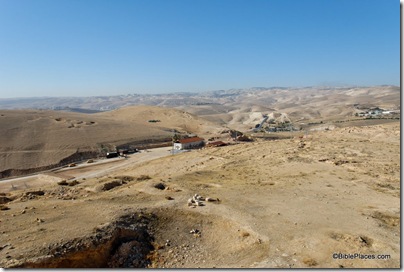It must be a slow news day if the Jerusalem Post is reporting on the James Ossuary forgery trial without apparently any new developments in the last 8 months. The judge rebuked the prosecution last October, saying “Not every case ends in the way you think it will when it starts. Maybe we can save ourselves the rest.” Shuka Dorfman therefore seems determined to convict the accused in the court of public opinion if he cannot do it after four years of trial. “I believe we have revealed only the tip of the iceberg. This industry encircles the world, involves millions of dollars,” said Dorfman.
That may well be true, and those who love the ancient world will be happy to see the forgery business destroyed, but this does not mean that Oded Golan forged the James Ossuary. From the JPost:
Golan and his co-defendants went on trial in the summer of 2005, but after more than 70 prosecution witnesses and 8,000 pages of testimony, Judge Aharon Farkash warned the prosecution that he was not convinced they had proved their case and advised them to consider halting the trial.
“After all the evidence we have heard, including the testimony of the prime defendant, is the picture still the same as the one you had when he was charged?” Judge Farkash pointedly asked the prosecution in October 2008. “Not every case ends in the way you think it will when it starts. Maybe we can save ourselves the rest.”
“Have you really proved beyond a reasonable doubt that these artifacts are fakes as charged in the indictment?” Judge Farkash said. “The experts disagreed among themselves. Where is the definitive proof needed to show that the accused faked the ossuary? You need to ask yourselves those questions very seriously.”
In an exclusive interview with The Media Line at his Tel Aviv home, Golan said he was confident that new scientific research undertaken by defense experts would finally exonerate him. Prosecution scientists had accused Golan of faking patina – a thin layer of biological material covering ancient items – in order to make the inscriptions on the artifacts seem old.
“No, I never faked any antiquity,” Golan told The Media Line. “During the last several years there were several tests and examinations of those items by prominent experts from different countries in different laboratories and I think we succeeded to prove that these inscriptions could not have been inscribed in the last century. There is a thin layer of patina – it’s a thin layer of crust made actually by a micro-organism that was developed inside the grooves of the inscription and this product made by the micro-organism could not have been developed in less than a hundred years.”
More here.
UPDATE: As Jim notes in the comments, the above report is related to a video produced by The Media Line in which Joe Zias claims that he saw the ossuary with part of the inscription in an antiquities shop in the 1990s.
Maybe it was the way that the producers edited the video, but I didn’t hear Zias make an unqualified assertion that he saw this exact ossuary and declare precisely what was inscribed at the time. (Zias’s words on video: “I remember that I seen a thing in an antiquities dealer in the 1990s, so it couldn’t have been in the hands of Golan.”) Of course, he need not make such a claim to the media. But one supposes that in the trial he would have made the strongest statements possible while under oath.
Apparently that, combined with the other evidence, was unconvincing to the judge.
As someone has noted in a comment on this blog before, exoneration in a criminal court will not prove that the ossuary’s inscription is authentic. But it should serve to silence the mouths of the (failed) prosecuting parties and allow the matter to be discussed by the experts on the merits of the evidence.
